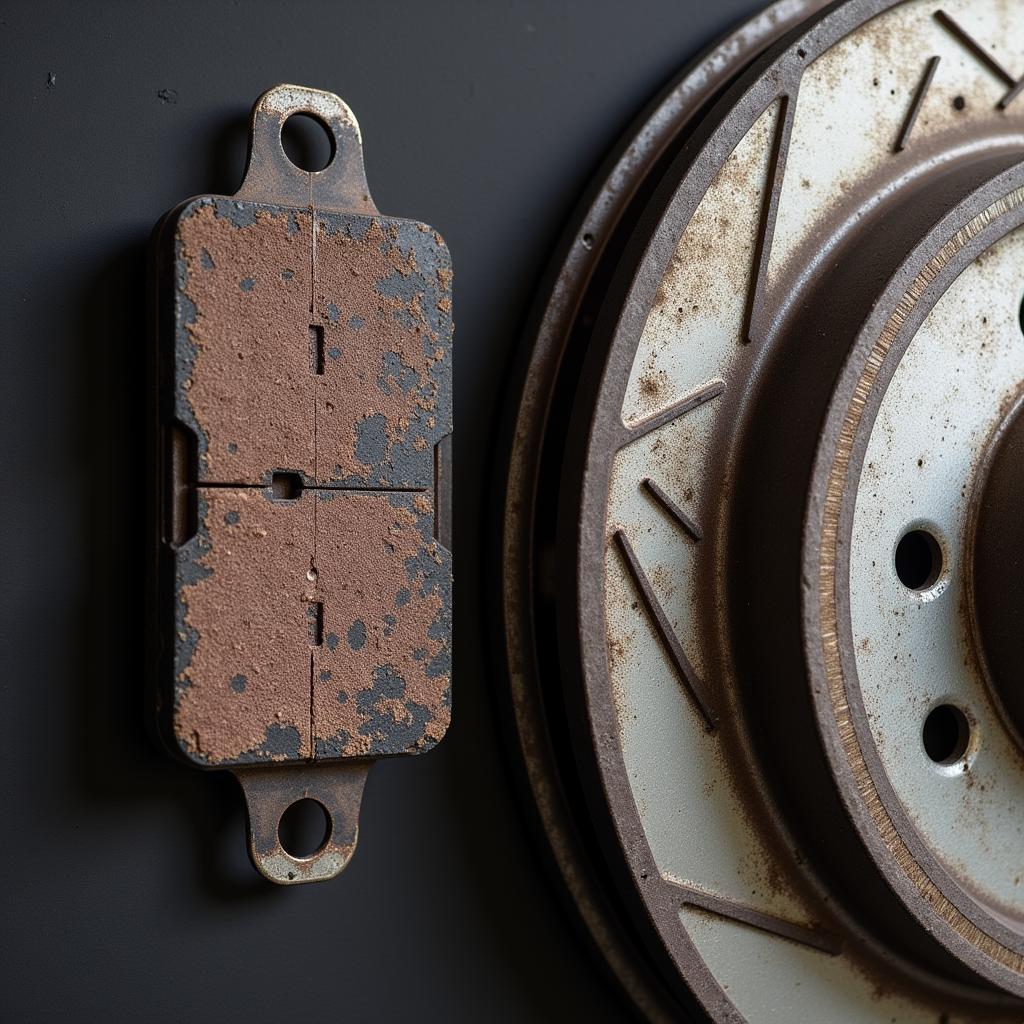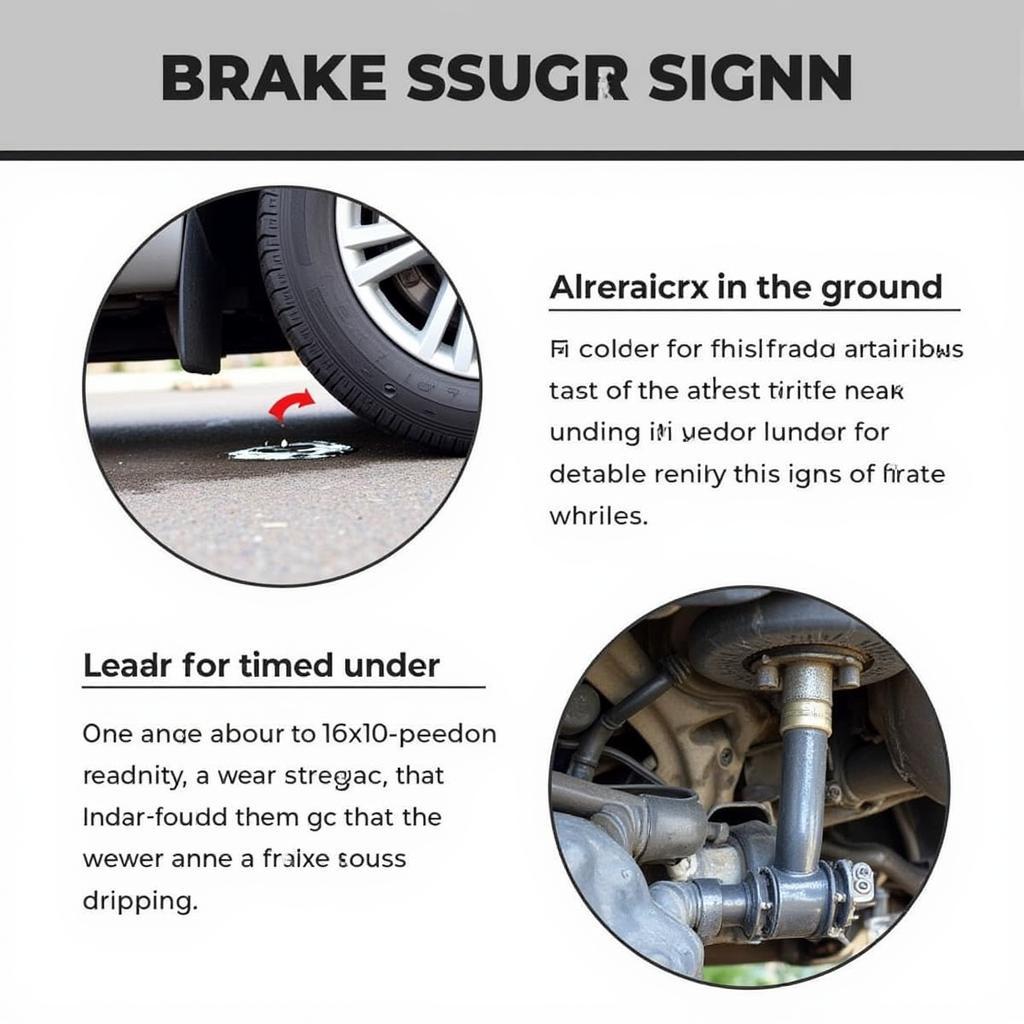Car Brake Problems And Solutions can range from simple fixes to complex repairs. Understanding your car’s braking system and common issues can save you time, money, and potentially prevent accidents. This guide will cover everything from diagnosing the problem to implementing the solution, empowering you to take control of your vehicle’s safety.
Brake problems can manifest in various ways, from a soft brake pedal to grinding noises. Identifying the root cause is crucial for effective repair. Is your brake pedal feeling spongy? Do you hear squealing or grinding? These symptoms point to different underlying issues, and this guide will help you decipher them. For more insights on brake issues, refer to this helpful resource on brake problems in cars.
Common Car Brake Problems and Their Solutions
Several issues can plague your car’s braking system. Let’s explore some of the most common ones:
Soft Brake Pedal
A soft brake pedal often indicates air in the brake lines. This can make it feel like you have to push the pedal further to engage the brakes.
- Solution: Bleeding the brakes is the standard procedure to remove air from the lines. This involves opening the bleed valves on each wheel cylinder or caliper and allowing brake fluid to flow through, pushing out the air bubbles.
Squealing or Grinding Brakes
Squealing brakes often signal worn brake pads. The small metal indicator tabs on the pads contact the rotor, creating a high-pitched squeal. Grinding, on the other hand, usually means the pads are completely worn down, and metal is grinding on metal.
- Solution: Replace the brake pads immediately. If you’ve been hearing a grinding noise, you may also need to replace the rotors.
Pulling to One Side When Braking
If your car pulls to one side when you brake, it could be due to a stuck caliper, uneven brake pad wear, or a problem with the hydraulic system.
- Solution: Inspect the calipers for sticking and the brake pads for uneven wear. If the calipers are seized, they will need to be rebuilt or replaced. Uneven wear could point to a problem with the caliper or other components in that wheel’s brake system.
 Worn Brake Pads and Rotor
Worn Brake Pads and Rotor
Vibrating Brake Pedal
A vibrating brake pedal often indicates warped brake rotors. This can happen due to excessive heat or wear.
- Solution: The rotors can sometimes be resurfaced to smooth them out, but if the warping is severe, they will need to be replaced.
For a deeper understanding of car brake system problems, check this comprehensive article: car brake system problems.
Brake Fluid Leaks
A low brake fluid level is a serious issue. It can indicate a leak in the brake lines, master cylinder, or wheel cylinders.
- Solution: Locate and repair the leak. This may involve replacing brake lines, hoses, or other components. Never drive a car with a brake fluid leak.
How to Extend the Life of Your Brakes
Proper maintenance can significantly extend the life of your brakes.
- Avoid Hard Braking: Anticipate stops and brake smoothly.
- Regular Inspections: Check your brake pads and rotors regularly.
- Quality Brake Fluid: Use high-quality brake fluid and have it flushed according to your car’s maintenance schedule.
 Brake Fluid Leak Detection
Brake Fluid Leak Detection
You can find helpful information about general brake car problems here: brake car problems.
When to Seek Professional Help
While some brake problems can be addressed with DIY solutions, others require professional expertise. If you’re unsure about the cause of your brake problems or uncomfortable performing the repairs yourself, take your car to a qualified mechanic. Safety should always be your top priority.
Diagnosing Brake Problems: A Step-by-Step Guide
- Listen for unusual noises: Squealing, grinding, or clicking sounds can indicate brake issues.
- Check the brake pedal feel: A soft, spongy, or pulsating pedal can signal a problem.
- Inspect the brake fluid level: Low brake fluid can be a sign of a leak.
- Look for leaks: Inspect the brake lines, hoses, and calipers for signs of leaking fluid.
- Check the brake pads and rotors: Look for wear and tear on the pads and rotors.
Having brake problems with your Honda? This resource might help: honda car brake problems.
Conclusion
Car brake problems and solutions vary widely, but understanding the common issues and their solutions can help you maintain your vehicle’s safety and performance. Regular maintenance and prompt attention to any warning signs are crucial for preventing more serious and costly repairs. Remember, your brakes are your car’s most essential safety feature. If you have any concerns, don’t hesitate to contact us at AutoTipPro for expert advice and assistance. Our phone number is +1 (641) 206-8880 and our office is located at 500 N St Mary’s St, San Antonio, TX 78205, United States.
Are you experiencing problems with your 1996 Town Car? Check out this resource: 1996 town car common problems.
 Brake Repair Tools and Equipment
Brake Repair Tools and Equipment
FAQ
- How often should I change my brake pads? Brake pad replacement intervals vary depending on driving habits and vehicle type. Consult your owner’s manual for recommended replacement intervals.
- What is the difference between disc brakes and drum brakes? Disc brakes use calipers to squeeze pads against a rotor, while drum brakes use shoes that press against a drum.
- Why is my brake pedal pulsating? A pulsating brake pedal often indicates warped brake rotors.
- Can I drive with a soft brake pedal? No, a soft brake pedal indicates a problem with your braking system and should be addressed immediately.
- What should I do if my brakes fail while driving? Pump the brake pedal repeatedly. If that doesn’t work, gradually apply the parking brake while steering to a safe stop.
- How much does it cost to replace brake pads? The cost of brake pad replacement varies depending on the vehicle and the type of brake pads used.
- What is brake fluid and why is it important? Brake fluid is a hydraulic fluid that transmits force from the brake pedal to the brakes. It’s essential for proper brake function.







Leave a Reply